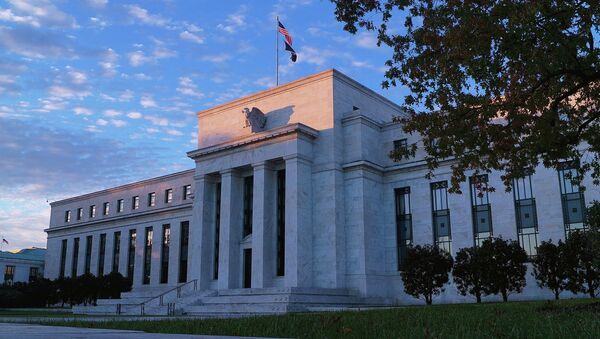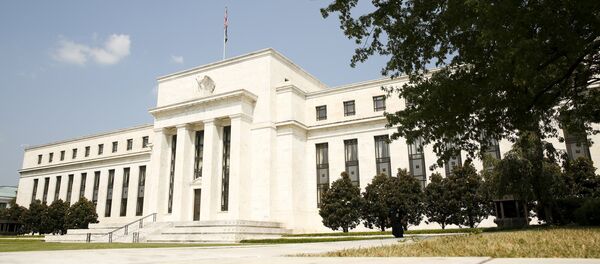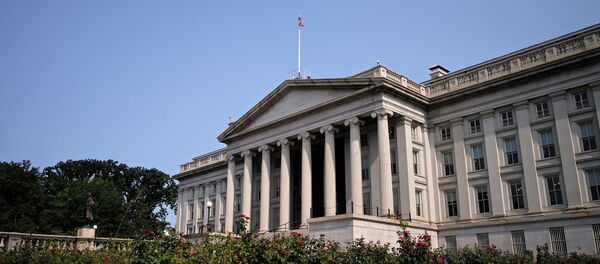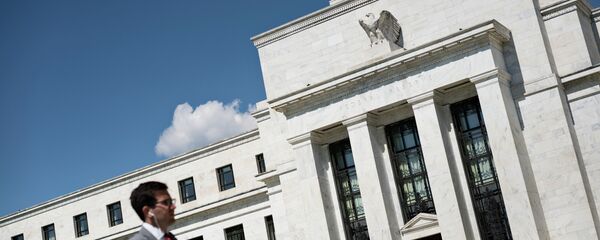Kristian Rouz – The US Department of the Treasury and Securities and Exchange Commission have simultaneously announced that they're looking for ways to monitor and regulate the $13.6-trln market for US government debt. Having admitted that they lack awareness of the current developments in this bond market, both regulators are seeking to prevent sudden swings in US debt pricing and yields like the one that occurred on October 15, 2014.
As the Fed is allegedly gearing up for its next monetary policy move, which market-watchers believe will happen in either November or December, regulatory oversight of structurally important segments of the bond market, such as trading in Treasury notes, has been deemed crucial.
“Trading in our nation’s debt should be transparent to the public,” Antonio Weiss, counsellor to the Secretary of the US Treasury, said on Monday.
As evidenced by the developments of the past several years, this is not the case any longer. First of all, the volume of the government fixed-income market has swollen dramatically since 1998, making it look more like a stock exchange. Second, amid weakening economic growth and skyrocketing personal, household and public indebtedness, risks to the fixed-income markets have increased exponentially.
“In close consultation with our fellow regulators, I have reassessed the decision of nearly 20 years ago to exclude from regulation ATS platforms that trade solely in government securities,” SEC Chair Mary Jo White said. “And I have recently directed the SEC staff to develop recommendations for the Commission to consider applying measures [that] would further enhance our regulation of platforms that trade government securities.”
The appreciation in US debt is depressing the yield and, subsequently, the natural interest rate, determining, to a substantial extent, domestic borrowing costs within the Federal Reserve’s corridor (its current width is 0.25-0.5pc). At this point, Fed funds rate stands at 0.41, and should Treasury notes continues their ascent in market value, the Fed rate will slide closer to the lower bound of 0.25pc – effectively undermining the regulator’s willingness to hike rates to the 0.5-0.75 percent gauge in the upcoming months. A discrepancy between natural rates and the Fed rate corridor would trigger an instant plunge in debt value on the day of the hike, potentially entailing a flash crash, or panic selloff.
"Treasury remains committed to close and careful review of the data before making any determinations," Weiss said. "But we believe the debate should shift from whether to seek increased transparency to how, when, and on what basis."
There is, however, no immediate planning available on how to ensure greater transparency in Treasury note trading. However, without reliable data on its debt trading, the US government might put political pressure on the Fed in order to delay any hikes in rates for as long as possible.
Meanwhile, last week, the SEC enacted bond market reporting rules, with brokers reporting to the Financial Industry Regulatory Authority. The first batch of data will see the light of day in July 2017.
“The data will be available for the first time to the relevant regulators to enhance our oversight of the US Treasury market,” White said.
The pace of economic policy moves in the short-term is likely to be determined by the outcome of the upcoming US presidential election. Should pro-establishment candidate Hillary Clinton win, we might have actual timing for the nearest Fed hike, July 2017. The reform candidate, however, might seek ways to devalue the governmental debt, meaning less predictability regarding the reform process and its effects on the open market.







